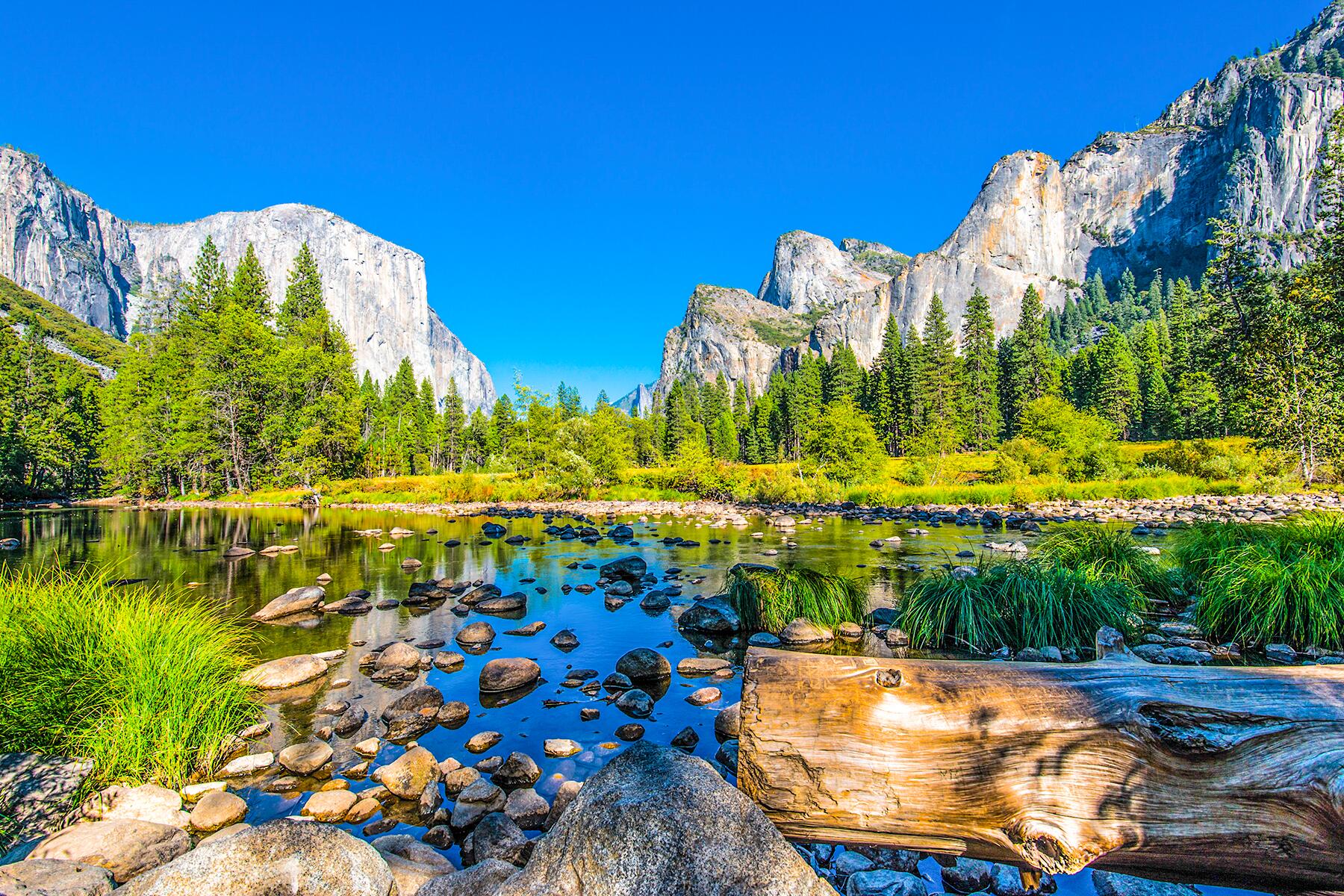Why be surrounded by people when you could be surrounded by penguins instead?
Once upon a time, the idea of a remote island with little human contact or internet access would have been the butt of jokes or the basis of a lengthy discussion on how best to escape. Nowadays, after endless months of an ongoing pandemic, spending some time in a place so remote seems far more appealing.
Taking off-the-beaten-path to a whole new level, these remote islands offer just that: an escape from everyday life in a breathtakingly beautiful setting where you’ll be free to explore nature and relax without any kind of COVID-related news coming your way.
Sure, you might struggle to access a few of these spots quickly—some are rightly protected to preserve the islands’ natural habitats, and others require a week-long boat journey to get there—but you can legally access all of them one way or another. Ready to start plotting your escape?
Top Picks for You
The Pitcairn Islands
WHERE: South Pacific Ocean
Travel is a little different on the Pitcairn Islands. There are no street names, only a single paved road, and directions based on landmarks or residents’ houses. Made up of four islands in total—Ducie, Henderson, Oeno, and Pitcairn (the latter being the only inhabited spot)—these remote volcanic islands are situated in the central South Pacific, with their closest neighbor a huge 242 miles to the west.
As you might expect, visitors are rare, but those who venture across are treated to vibrantly colorful coral reefs, reef flats, and beaches. Dive down to a shipwreck, swim in tidal pools and caves, or try and decipher ancient petroglyphs on the Down Rope cliff. With only 56 permanent residents, you’ll grow to recognize faces pretty quickly.
Tristan da Cunha
WHERE: South Atlantic Ocean
Tristan da Cunha is the most remote inhabited archipelago in the world and is a huge 1509 miles from its closest neighbor, Cape Town, South Africa. This tiny island has less than 300 people, originating from 15 original settlers. Its wet and windy climate makes it a wonderful place for verdant green grass and plant species found nowhere else in the world.
The only way to visit Tristan da Cunha is via a seven-day boat trip from South Africa but, when you’ve completed the journey, you’ll be able to gaze down from the jutting cliff edges, admire the elephant seals, and spend your days wandering through the grass slopes and green pastures with no distractions.
Recommended Fodor’s Video
Macquarie Island
WHERE: Southwestern Pacific Ocean
Macquarie Island is a stunningly beautiful Tasmanian island made out of the exposed crust of the undersea Macquarie Ridge. This wildlife paradise is a top spot for animal lovers with tens of thousands of penguins and elephant seals. Albatrosses graze the waves and perch on cragged rocks keeping daily attention.
It’s the only island in the world composed entirely of oceanic crust and rocks from the mantle, with King penguins waddling along the coastlines, seals swimming in the sea, and mesmerizing lakes dotted throughout. This UNESCO World Heritage Site is most loved by botanists and biologists and is the only known breeding ground of the Royal penguin. The only way to get to Macquarie Island is by sea, and there are no proper harbors to dock a boat.
Moorea
WHERE: South Pacific Island
Venture 12 miles northwest of Tahiti, and you’ll stumble across Moorea: a beach-bungalow-filled tropical island that’s so remote, it makes venturing to The Maldives’ remote beach bungalow islands look like a breeze in comparison. Crystal clear lagoon waters, fresh-off-a-postcard white sand, and rugged mountains make this spot a brilliant escape for surrounding yourself with spectacular nature instead of more pandemic news.
Moorea’s renowned for its marine life and, bonus: stingrays and sharks can’t spread COVID. This small island is largely undiscovered, with mountains rumored to have never been summited and rainforests that look like they’ve never been explored. But the only way to access the island? By boat or seaplane.
The Kerguelen Islands
WHERE: French Southern and Antarctic Lands
After two years of a global pandemic, where better to set up camp than the Desolation Islands? You’ll never find more than 100 people living on The Kerguelen Islands (nicknamed the Desolation Islands) at any one time as these islands, located 2051 miles away from any sort of civilization in the southern Indian Ocean, have no permanent inhabitants.
But what these islands lack in human population, they more than make up for with a thriving number of seals and penguins. While they might not be known best for their communication skills, maybe it would just be nice to finally get a bit of peace and quiet. Got an interest in geology, climate control, or photography? You’ll find plenty of entertainment across the ice-covered areas of the Kerguelen Islands.
Spitsbergen
WHERE: Arctic Ocean, the Norwegian Sea, and the Greenland Sea
Spitsbergen, part of Norway’s Svalbard archipelago, is home to plenty of titles: most of which start with “the world’s northernmost.” Halfway between Norway and the North Pole, it’s filled with snow-tipped mountains and vibrant red houses. Expect to live alongside more polar bears than people: Spitsbergen is home to around 3,000 bears and 2,500 people.
Mountains, glaciers, and frozen tundra provide breathtaking views in every direction. The occasional Svalbard reindeer gives this archipelago a perpetual Christmas appeal, too. Set up camp here during the winter months for an almost guaranteed sighting of the Northern Lights or during the summer for 24 hours of pure sunlight. Spitsbergen is the only inhabited island in Svalbard, so you could also venture to even more remote islands if you’re looking to avoid human contact entirely.
Fernando de Noronha
WHERE: Archipelago in Brazil
Good news: you’ll find yourself surrounded by sea turtles, rays, dolphins (the largest population in the world), and reef sharks in Fernando de Noronha. Set on the tip of a submerged volcanic formation, it’s made up of 21 islands with human life on only one.
This UNESCO World Heritage Site is best known for its picturesque white-sand beaches and wonderful snorkeling and diving opportunities, with colorful marine life and warm, turquoise waters. The total area of Fernando de Noronha is just 16 square miles, and there’s only one main road. Visitor numbers are, unsurprisingly, limited here. But if you can hop on a plane or a boat here, you’ll probably never want to return home after.
Bear Island
WHERE: Barents Sea
Bear Island’s population grows at certain times throughout the year but not with humans, with sea eagles. Set just under the North Pole, Bear Island is not typically somewhere you’d visit for a vacation in the Svalbard archipelago.
Although stunningly beautiful with its frozen clifftops, glittering ice, and magnificent wildlife, it’s seriously cold and not particularly designed for long-term guests. This arctic paradise glimmers with sunlight during the ‘warmer’ months, when thousands of birds take flight along the dramatic coastline. If you do happen to love the cold weather, you’ll be a huge fan of Bear Island’s surf spots but, be fair warned, sea temperatures hover around 35.6F. Only nine people live here full time, so you’ll never have to fight for a wave to yourself.
Easter Island
WHERE: Island in Chile
Rainbow-hued sunsets highlight the 900 monumental Moai statues on Easter Island, a place that has a lot to show off. It’s mostly pollution-free and is also home to some of the world’s clearest waters. A haven for snorkelers, the waters around Easter Island are transparent up to a depth of 160 to 190 feet. So, as well as avoiding human contact, you’ll also be able to avoid breathing polluted air or swimming amongst trash.
Easter Island has a few different names, and its Indigenous name is Rapa Nui (Great Rapa). Known as the world’s most secluded inhabited island, it’s 3,800 kilometers away from its nearest neighbor Chile and is an almost entirely treeless island.
Amsterdam Island
WHERE: Indian Ocean
At one point during its history, Amsterdam Island was overrun with feral cattle and free from a human population whatsoever. Nowadays, things are a bit calmer, with a population of 25 researchers and a friendlier bunch of animals. This volcanic island sits almost exactly at the midpoint between Australia, Antarctica, and Madagascar and is more than 2361 miles away from any significant landmass.
Sure, it’s difficult to get there, but its temperate weather and stunning caldera make it suitable for anyone taking social distancing to the next level. You’ll probably spend most of your time here hiking: either the Mont de la Dives or the stunning cliffs by the coastline, known as Falaises d’Entrecasteaux. Either that or photographing the endemic wildlife: the Amsterdam albatross, Antarctic tern, and western rockhopper penguin all call Amsterdam Island home.
The Cocos Keeling Islands
WHERE: Indian Ocean
The Cocos Keeling Islands is made up of 27 miniature islands, with white sand beaches, gently waving palm trees, and altogether a feeling of delicious separation from the outside world. Located in the Indian Ocean and considered by some as part of Australia, these tiny islands have a population of 550 people.
Despite its tiny size, the main island, West Island, has its own airport. If the relaxing pace didn’t already convince you of island life, you might be by the ease of simply hopping on a plane to this remote paradise. The Cocos Keeling Islands are home to spectacular nature, particularly in the Pulu Keeling National Park in the north of the islands. It’s under strict nature protection, but you can snorkel, dive, kitesurf, and hike with guided tours.
Bouvet Island
WHERE: South Atlantic Ocean
Bouvet Island is best known for its thriving penguin community, with more than 117,000 calling the island their home. So, while it might not be socially distanced in the traditional sense, you’ll be surrounded by soft, feathered friends rather than many of the human type. Bouvet Island is also pretty hidden: tucked away and engulfed entirely by a glacier.
It’s so remote, in northern Norway, that the island was actually lost for years until 1808 after its coordinates were inaccurately measured the first time around. It’s pretty difficult to visit Bouvet Island as its only inhabitants are researchers and visitors are mostly denied visas. But there are often research projects going on, so you might be able to legally enter this subantarctic volcanic island and make friends with the penguins that way.






These islands look amazing to visit. I'd just have to sell my first born to afford the airfare/ship fare to get there.